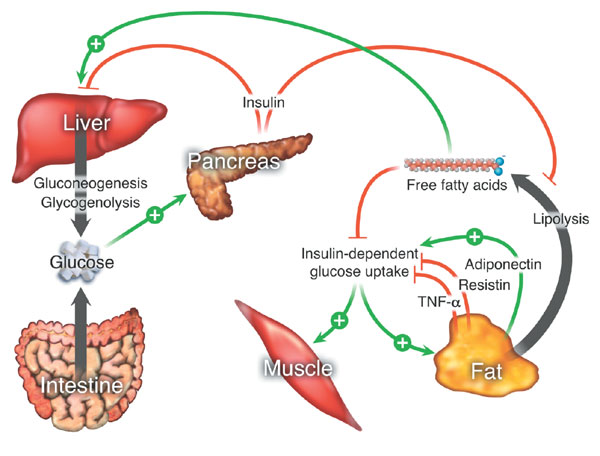The World Health Organization recently sent out a tweet suggesting:
Reducing total fat intake to less than 30% of total energy helps prevent unhealthy weight gain in adults http://goo.gl/pTGfTS
I appreciate that it is difficult to solve the complex problem of obesity in 140 characters or less, however the WHO did include a link: Diet “Fact” Sheet #394 September 2014
When it comes to prescribing nutritional advice I believe it is important to choose words carefully so the information is not subject to misinterpretation. Unfortunately the WHO tweet, fact sheet and referenced studies fail on all counts.
In the tweet the WHO prescribes what initially appears to be a blanket statement that the world should limit fat intake to no more than 30% of total energy.
First of all, all fats are not created equal – something the “fact” sheet attempts to illustrate but perhaps fact is not the best word choice.
Fact: (noun) A thing that is true, indisputably the case.
The reference documents contain no conclusive evidence of any kind to support the reduction of fat categorically or saturated fat. It is in fact the lack of evidence that rendered the team uninformed and the basis to keep the existing low fat advice unchanged.
WHO referenced three studies – below are key points:
The first study entitled Effect of Reducing Total fat Intake On Body Weight…
Provides this conclusion:
In this review we have tried to separate out whether changes in individual fatty acid fractions are responsible for any benefits to health (using the technique of meta-regression). The answers are not definitive, the data being too sparse to be convincing. We are left with a suggestion that less total fat or less of any individual fatty acid fraction in the diet is beneficial.
“The answers are not definitive” yet inexplicably they “suggest” less fat “is” beneficial an perhaps most egregious is that the conclusion to consume less encompasses any individual fatty acid including the essential to life category of omega 3 and 6.
It is noteworthy that the focus of the tweet and this referenced study was specific to “ body weight” which is unscientifically vague instead of addressing body composition and providing the public with specific information of what represents healthy levels of body fat by age and gender. “Weight” tells is nothing about the composition. It is inexplicable that the WHO does not accurately measure obesity, instead the WHO continues to use the antiquated Body Mass Index (BMI) which, does NOT measure body fatness with the additional insult that BMI excludes women and children or alternatively inappropriate suggests gender is not relevant?
Obesity has become so pervasive over the past forty years (the same amount of time the low fat diet was forced upon North America) if the WHO actually measured body fatness and looked at nutrients instead of calories and the oversimplified energy balance theory perhaps we could finally put an end to the low fat diet that represents the worlds worst nutritional experiment in human history.
But I digress, even if the focus of the study was “Dietary fat intake and prevention of cardiovascular disease… “which coincidentally was proffered by the very same lead author Lee Hooper who lead the aforementioned “body weight” study, the fat / cardiovascular disease study concluded::
Despite decades of effort and many thousands of people randomised, there is still only limited and inconclusive evidence of the effects of modification of total, saturated, monounsaturated, or polyunsaturated fats on cardiovascular morbidity and mortality
Lets take a look at the second referenced study the WHO relied upon to make the statement that dietary fat should be restricted to 30% or less:
WHO Technical Report Series 916 – Diet, Nutrition and the Prevention of Chronic Diseases
The report suggests a near global increase in dietary fat consumption and further notes the specific increase the category of vegetable fats that the WHO actually recommends:
By 1990, vegetable fats accounted for a greater proportion of
dietary energy than animal fats for countries in the lowest per capita
income category. Changes in edible vegetable oil supply, in prices and
in consumption equally affected rich and poor countries, although the
net impact was relatively much greater in low-income countries.
“The types of edible oils used in developing countries are also changing
with the increasing use of hardened margarines (rich in trans fatty acids)
that do not need to be refrigerated.”
Here is the problem; the WHO media center Healthy Diet “Fact” sheet states:
“the risk of developing NCDs (noncommunicable diseases (NCDs), including obesity, diabetes, heart disease, stroke and cancer) is lowered by reducing saturated fats to less than 10% of total energy (2. 3), and trans fats to less than” 1% of total energy, and replacing them with unsaturated fats contained in vegetable oils (2, 3). “
WHO suggests limiting man made trans fats to 1% of energy – when the only safe level of man made trans fat is zero and should be completely eliminated from the diet BLOG
While it continues to demonize saturated fats with no conclusive evidence of any kind and only reporting only two regions of the globe are consuming at or above WHO guidelines:
“A variable proportion of these fat calories are provided by saturated
fatty acids. Only in the two of the most affluent regions (i.e. in parts of
North America and Europe) is the intake of saturated fat at or above
10% of energy intake level. In other less affluent regions, the proportion
of dietary energy contributed by saturated fatty acids is lower, ranging
from 5% to 8%, and generally not changing much over time.”
I would have hoped the researchers might have noticed that correlation existed when they reported the rise is fat from vegetable oil sources (potentially rich in trans fat), that the trend line parallels the rise in obesity. Instead the report continues to suggest we should avoid saturated fat from animal sources and increase vegetable oil consumption as though Ancel Keys himself had doctored the study.
“Fats intake can be reduced by:
- changing how you cook – remove the fatty part of meat; instead of butter, use vegetable oil (not animal); and boil, steam or bake rather than fry;
- avoid processed foods containing trans fats;
- limit the consumption of foods containing high amounts of saturated fats (e.g. cheese, ice creams, fatty meat).”
Perhaps the WHO was saving the real evidence for the third of the referenced studies that suggest we should reduce fat intake to less than 30% of energy.
The study entitled: Fats and fatty acids in human nutrition: report of an expert consultation
I have read this numerous times looking for any evidence that would cause the study to conclude with Einstein’s definition of insanity doing the same thing over and over and expecting a different result. I took the liberty of bolding the nonsensical demonization of fat and ambiguous consideration of weight instead of obesity and energy instead of nutrients.
CONCLUSIONS AND RECOMMENDATIONS FOR TOTAL FAT
The Expert Consultation examined the background papers, scientific reports and various studies assessing the relationship between total dietary fats as well as selected fatty acids and various physiological conditions and illnesses. The experts agreed with the evidence summarized in two recent reports (WHO, 2003; WCRF/AICR, 2007) that
there is no probable or convincing evidence for significant effects of total dietary fats on coronary heart disease or cancers. Therefore, of primary concern and importance was the potential relationship between total dietary fats and body weight (overweight and obesity).
There was convincing evidence that energy balance is critical to maintaining healthy body weight and ensuring optimal nutrient intakes, regardless of macronutrient distribution of energy as % total fat and % total carbohydrates. Although the specific evidence was not reviewed in-depth at the consultation it was felt sensible that maintaining appropriate dietary patterns and energy levels, and adequate physical activity levels were critical in preventing unhealthy weight gain (i.e. overweight and obesity) and to ensure optimal health for those predisposed to insulin resistance.
Some older intervention studies from industrialized countries suggest that diets with lower % of energy from fat (i.e. %E fat) tend to be hypocaloric and are therefore associated with short term weight loss. Conversely, more recent randomized controlled trials in predominantly overweight populations from industrialized countries, which compared isocaloric diets with different levels of total fat, have shown that a higher %E fat can lead to greater weight loss than observed with low fat diets. However, the differences in the intake of other macronutrients such as amount and type of carbohydrates and the relatively high drop-out rate in some studies limit the strength of the evidence and the generalization of these results.
Various ecological data from observational studies in developing and transitional countries suggest that shifting from a lower to a higher %E fat has been associated with both lower and higher total energy intake and to unhealthy weight gain; thus, potentially contributing to the increasing problem of overweight and obesity. The opposite is observed in industrialized countries where %E fat has decreased while obesity has increased.
The insufficient evidence and conflicting interpretation of results on the nature of the relationship between the %E fat and adult body weight convinced the Expert Consultation that at this time it was not possible to determine at a probable or convincing level the causal relationship of excess % energy intake from fat and unhealthy weight gain.
Full agreement among the experts regarding the upper value of acceptable macronutrient distribution range (AMDR) for %E fat was not achieved; thus maintaining the current recommendation for a maximum intake value of 30-35%E fat was considered prudent. Further studies and a systematic review of all available evidence are needed to provide better evidence on which to base a recommendation on AMDR for %E fat that are applicable globally.
There was agreement among the experts that in populations with inadequate total energy intake, such as seen in many developing regions, dietary fats are an important macronutrient that contribute to increase energy intake to more appropriate levels.
Based on the considerations provided in the preceding section, the Expert Consultation proposed the following AMDR which are consistent with the existing 2002 expert consultation recommendations (WHO, 2003)
Shall I further summarize it for you?
Experts agreed no probable or convincing evidence existed to suggest dietary fats cause heart disease or cancer so instead they decided to focus on weight gain… but not measure it accurately. The experts decided to continue to use BMI that does not measure body fatness and misdiagnoses 48% of women and 25% of men (Plos One link)
The experts? apparently agreed if they are not going to measure body fatness, then why not continue the trend, instead of measuring and recommending individualized consumption of the essential nutrients of water, protein, fat, minerals and vitamins that support life and arm the immune system … why not lump them all categorically into something called energy so they could include the non essential category of carbohydrates that provide a source of energy and nothing else.
Experts? could not agree on how much fat was healthy so instead they disbanded leaving the decades old low fat diet recommendations of a maximum of 30-35% energy securely in place… if nothing else we should eventually learn just how fat the human race can get following a low fat diet.
© 2014 – Copyrights Grant Roberts All Rights Reserved
 New Years day may seem like an odd time to post a fast food review and truth be told it is the first time I have ever set foot inside a Carl’s Jr. restaurant or even thought about trying anything displayed on their picture laden menu board.
New Years day may seem like an odd time to post a fast food review and truth be told it is the first time I have ever set foot inside a Carl’s Jr. restaurant or even thought about trying anything displayed on their picture laden menu board.



 Re: Today’s Debate: Nutrition (December 2, 2014)
Re: Today’s Debate: Nutrition (December 2, 2014) Water is the most abundant component of a healthy human body however the risk of dehydration and fluid imbalance increases over time. One of the most fascinating observations regarding hydration has to do with age. We are all familiar with the mythical quest in search of the fountain of youth, but I propose the source and secret to eternal youth is actually held within each one of us on the cellular level. The objective is to hold on to as much of the rejuvenating powers of water as possible through lifestyle management.
Water is the most abundant component of a healthy human body however the risk of dehydration and fluid imbalance increases over time. One of the most fascinating observations regarding hydration has to do with age. We are all familiar with the mythical quest in search of the fountain of youth, but I propose the source and secret to eternal youth is actually held within each one of us on the cellular level. The objective is to hold on to as much of the rejuvenating powers of water as possible through lifestyle management.



